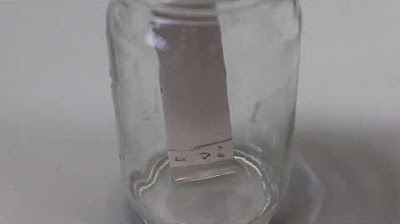Complex Amalgam Restoration | Part 2
Summary
TLDRIn this instructional video, Dr. Richard Stephenson from Stevenson Dental Solutions in San Dimas, California, walks viewers through the process of restoring a complex amalgam. The video covers the steps from preparation, placement of a rubber dam, to using various instruments for shaping and carving the amalgam. Emphasizing precision, the video demonstrates techniques for achieving anatomical accuracy, such as sealing gingival areas, establishing proper contacts, and shaping occlusal surfaces. Dr. Stephenson shares his insights on creating durable restorations and prepares viewers for the next step: polishing for a smooth, lasting finish.
Takeaways
- 😀 Proper preparation of the cavity is essential before starting the restoration process, ensuring that the preparation is suitable for receiving the amalgam.
- 😀 A rubber dam is applied to isolate the area, and proper wedges are used to ensure a tight seal and prevent any gaps or excess amalgam leakage.
- 😀 It's important to use a universal matrix band to shape the restoration, ensuring that the retainer head doesn't interfere with the cusp replacement area.
- 😀 Condensing the amalgam with sufficient force is crucial to ensure the material fills all the retentive areas, especially in the proximal boxes.
- 😀 Proper condensation and burnishing techniques are vital for creating a good contact and contour, especially for the anatomical shape of the proximal contact.
- 😀 When filling the cavity, multiple double spills of amalgam are used to ensure that the cavity is adequately filled, and more amalgam can be added if needed to avoid voids.
- 😀 Instead of carving immediately, the band is removed while the amalgam is still workable to allow sealing of gingival areas and to ensure no voids are present.
- 😀 Contour and anatomical shape are created using tools like the Hollenbeck carver, ensuring the cusp tips face inward and the occlusal surface mimics natural tooth anatomy.
- 😀 A clear discoid is used to refine the contours and margins, ensuring a smooth transition between the amalgam and tooth structure, avoiding submarginal areas.
- 😀 The final shaping process includes creating secondary grooves and fossa, ensuring a natural, smooth feel for the patient and maintaining anatomical accuracy.
- 😀 Once the amalgam is firm, a polishing procedure is performed to enhance the surface's hardness, morphology, and smoothness, improving both function and aesthetics.
Q & A
What is the focus of this video on complex amalgam restorations?
-The video focuses on the process of placing and carving a complex amalgam restoration, including preparation, placement, condensation, and the use of specific dental tools for contouring and finishing.
What is the significance of the rubber dam in this procedure?
-The rubber dam is used to isolate the tooth and maintain a dry working environment, ensuring the amalgam material can bond properly and preventing contamination during the restoration process.
Why is a customized wedge used in this restoration?
-A customized wedge is used to seal small voids, particularly in the mesial-facial box area, ensuring proper contact and preventing amalgam leakage during the restoration process.
What is the purpose of using a universal matrix band in this procedure?
-The universal matrix band helps shape the walls of the restoration cavity, creating a proper form for the amalgam filling. It is twisted to avoid interference with the cusp area and prevent excess amalgam from spilling into unwanted areas.
How does the practitioner ensure proper contact and contour of the proximal areas during condensation?
-The practitioner uses a ball burnisher to burnish the matrix band against the contacts, ensuring intimate contact between the amalgam and adjacent tooth surfaces and shaping the proximal contact anatomically.
What is the role of the egg burnisher in this procedure?
-The egg burnisher is used to confirm amalgam condensation and help shape the restoration, ensuring it fills the cavity correctly and is contoured to match the natural anatomy of the tooth.
Why does the practitioner remove the matrix band immediately after condensation instead of carving the amalgam directly?
-Removing the matrix band early allows the practitioner to seal any gingival voids and ensures better control of the restoration shape before the amalgam sets. This technique also prevents potential issues with the rubber dam or matrix band during carving.
What is the significance of using the Hollenbeck carver in complex amalgam restorations?
-The Hollenbeck carver is crucial for shaping the cusps and contours of the amalgam, particularly in complex restorations. It helps establish appropriate cusp heights and contours that match the original tooth anatomy.
How does the practitioner achieve the correct external contours during carving?
-The practitioner uses an explorer to guide the development of facial and lingual contours, taking into account the adjacent tooth structure and preoperative assessment to ensure the restoration matches the natural anatomy.
What is the role of the clear discoid instrument during carving?
-The clear discoid instrument is used to define the margins between the prepared tooth and the amalgam, as well as to scoop out fossa areas and refine the restoration's contours with precision.
Outlines

Dieser Bereich ist nur für Premium-Benutzer verfügbar. Bitte führen Sie ein Upgrade durch, um auf diesen Abschnitt zuzugreifen.
Upgrade durchführenMindmap

Dieser Bereich ist nur für Premium-Benutzer verfügbar. Bitte führen Sie ein Upgrade durch, um auf diesen Abschnitt zuzugreifen.
Upgrade durchführenKeywords

Dieser Bereich ist nur für Premium-Benutzer verfügbar. Bitte führen Sie ein Upgrade durch, um auf diesen Abschnitt zuzugreifen.
Upgrade durchführenHighlights

Dieser Bereich ist nur für Premium-Benutzer verfügbar. Bitte führen Sie ein Upgrade durch, um auf diesen Abschnitt zuzugreifen.
Upgrade durchführenTranscripts

Dieser Bereich ist nur für Premium-Benutzer verfügbar. Bitte führen Sie ein Upgrade durch, um auf diesen Abschnitt zuzugreifen.
Upgrade durchführenWeitere ähnliche Videos ansehen
5.0 / 5 (0 votes)






